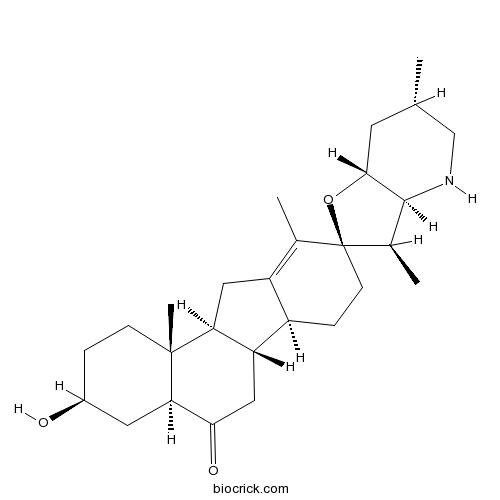Fritillaria unibracteata Hsiao et K. C. Hsia
Fritillaria unibracteata Hsiao et K. C. Hsia
Fritillaria is a genus of about 100 species of bulbous plants in the family Liliaceae, native to temperate regions of the Northern Hemisphere. Fritillaria unibracteata Hsiao et K. C. Hsia, Bulb of 2 scales, 6--8 mm in diam. Stem 15--40 cm. Leaves 5--7, basal 2 usually opposite, others alternate or also opposite; leaf blade linear to linear-lanceolate, 3.6--5.5 cm × 3--5 mm, apex not cirrose. Two new steroidal alkaloids peimisine-3-O-β-D-glucopyranoside and puqiedinone-3-O-β-D-glucopyranoside, together with three known compounds peimisine, puqiedinone, and puqiedine, were isolated and characterized from the bulbs of Fritillaria unibracteata. Fritillaria is also used as an herb in Traditional Chinese Medicine, known by the Chinese name Chuan Bei Mu, and Latin, Bulbus fritillariae cirrhosae. In one study Fritillaria modulated airway inflammation by suppression of cytokines, IgE, histamine production, and eosinophilic accumulation along with increased interferon-gamma production in tests on lung tissue.






